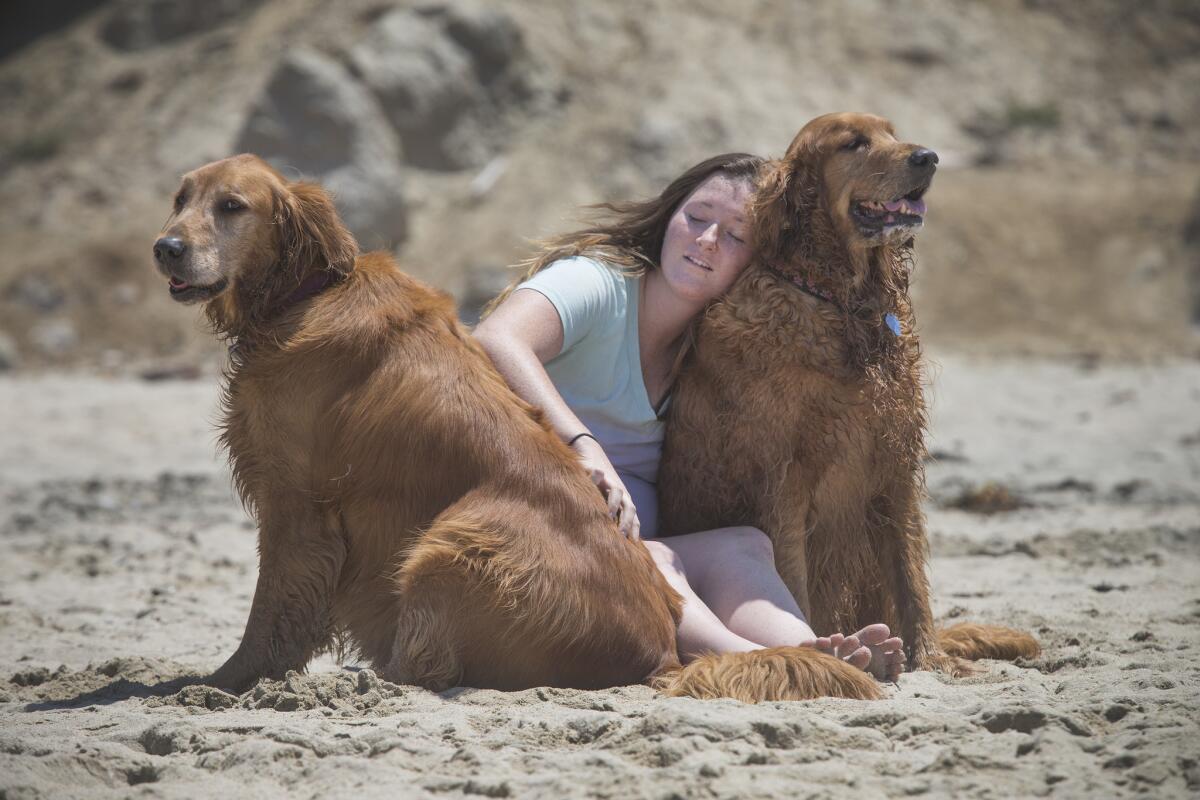Make the world a better place: Watch a cute animal video

Owning a pet or even watching a video about animals can make people more empathetic.
- Share via
Does owning a pet or even watching those ubiquitous YouTube animal videos make us more empathetic? Apparently so. Loving those creatures may unlock ways to make you less lonely and make the world a better place.
“Interacting with a pet can increase oxytocin, beta-endorphin and dopamine levels as well as reduce cortisol levels — powerful neurochemicals that can lower our blood pressure and make us feel happier, better and more relaxed,” says Rebecca A. Johnson, a professor and director of the Research Center for Human-Animal Interaction at the University of Missouri College of Veterinary Medicine. Oxytocin, often called the “love” or “trust” hormone because of the feelings it triggers when we kiss or fall in love, also promotes social bonding.
And a positive response can occur by just looking at the animal, Johnson says. Does that include watching cute animal videos?
Check out the all-new L.A. Times Pets page
“Yes,” says neuroeconomist Paul Zak, a professor at Claremont Graduate University. “Watching YouTube videos about animals can induce oxytocin release causing us to engage in helping animals or people.”
Roman Krznaric, author of “Empathy: Why It Matters, and How to Get It,” agrees. Empathy can come from so-cute-your-cheeks-hurt-from-smiling pet videos and from those of suffering factory-farm animals.
“How we treat others, give more rights and responsibilities to others, whether it’s people, animals or robots, depends on the kind of mind you perceive they have. We develop empathy with animals we perceive as having similar emotional ranges or behaviors,” says Kurt Gray, an assistant psychology professor at the University of North Carolina in Chapel Hill.
Share your photos: Show us your pets, and tell us how you “met”
An individual animal story lets us put ourselves in their “shoes,” says Nicholas Epley, a professor of behavioral science at the University of Chicago. “You feel the pain of a mother elephant trying to rescue her baby from a well, but when you hear that 5,000 elephants are slaughtered you don’t feel 5,000 pangs of pain.”
But does our empathy for YouTube animals or those featured on TV spots for animal welfare make us nicer to them or become vegan? “Our empathy tends to spike while or immediately after seeing these videos,” Epley says.
Krznaric uses caring for pets as a “school for empathy” with his 6-year-old twins. “They’re too young to be exposed to videos showing terrible things happening to factory-farmed animals. But at the zoo or while watching other kinds of animal videos, I might ask them what they think it’s like to be an animal in a cage … to imagine what it’s like to be a cat stuck out in the rain … to be a homeless person stuck out on the rain?”
Most people have the capacity to empathize, Krznaric says, and it’s important to “extend our empathetic imagination to all creatures.”
MORE:
How pit bulls became the ‘bad boys’ of the dog world
Top 10 names for pets: No, ‘Fido’ did not make the list
Think you can claim your pet is an ‘emotional support animal’?
Hey, fat cat: Overweight pets are unhealthy pets, vets warn
More to Read
Sign up for The Wild
We’ll help you find the best places to hike, bike and run, as well as the perfect silent spots for meditation and yoga.
You may occasionally receive promotional content from the Los Angeles Times.








